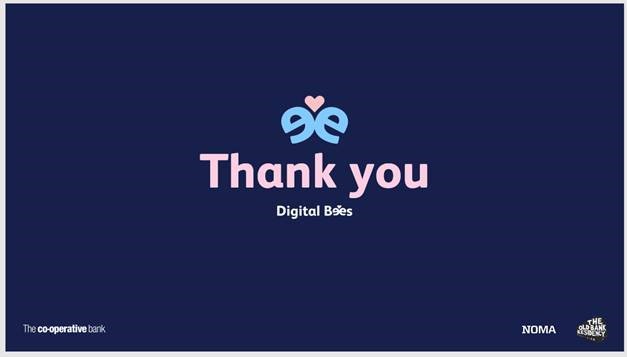
During this period of uncertainty, a lot of businesses are finding non-essential consumer purchasing, online orders, holiday bookings, etc. are at an all-time low. It’s no surprise - everyone is uncertain about what will happen next and when it will happen.
But rather than resting on your laurels during this period, now is the perfect time to do a spring clean on your website. By spring cleaning, you will improve your website’s visibility, strengthen your reputation and will leave you in the strongest position possible when people are ready to shop again.
To help, we have created the ultimate guide of 16 practical spring cleaning ideas. From easier steps at the beginning, which you can get going on by yourself, to more technically challenging intermediate and advanced ideas, the list is long but thorough. Plus, for every idea, we have also included directions of what to do, so you can get going today!

These first steps are the ones which anyone can do - no technical knowledge necessary! They’re effective and practical, and you can get going on them today.
Primarily, these ideas will make user experience better and they will also start you getting going with SEO best practice!
1. Check your website’s links and sitemap are working
The first thing to do on your spring clean is to make sure that your website is working perfectly.
It may seem obvious, “of course it is!” - people are using it successfully and transactions are working - but when was the last time you actually checked all the non-essential links? The parts of the website people may be browsing or visiting to do research.
As new pages and links have been added over the years (and other out-of-date content not taken away) it is easy for the overall website to become a little disorganised and cluttered. Now is your chance to rectify that.
What to do:
- Go through your website thoroughly, clicking on links to make sure they aren’t broken, and also that they take you to where is expected. Here is a link checking tool you can use to do this.
- Take a look at your sitemap to make sure all of your pages are accessible from others. Again, it is easy to create a new webpage but completely neglect to have it linked from other logical places.
2. Make sure your content is (literally) up to date
The next step is to make sure that your website is up-to-date. Visitors will notice if your ‘latest news’ on the homepage is from 2018, or if the content has outdated references about “what’s coming up soon”, all leaving a negative impression.
Fortunately, though, customers are unlikely to be keeping tabs on your website, just as long as it’s clearly not out of date (such as referencing a just-passed date, month or year that’s been).
What to do:
- The easiest thing to do is simply to delete all references to dates. So instead of updating ‘Brand new for 2019’ to ‘Brand new for 2020’, keep it as ‘Brand new!’ and save yourself the hassle next year!
- Whilst blog posts are an exception to this rule (a blog with posts stretching back years appears knowledgeable and established) make sure it looks like it’s been recently updated. Even if that’s simply repurposing old content with today’s date!
3. Keep up with your competitors
Now is the perfect time to have a cheeky browse on your competitors’ websites and see what they’re up to.
Is there anything on there that you think looks really interesting? Which you think would benefit your customers? Competitor’s websites are a great source of inspiration for what you could get up to next.
What to do:
- Have a look at your competitors’ websites and make notes on what you like and could use for your business.
- Try going through the booking/buying process and note how it differs to your own. Is it better than yours? If so, why? Again make notes to pass onto your website developer.
4. See how your website performs on mobile
Making sure your website works well on mobile devices is absolutely essential, especially during this coronavirus period when some people are glued to their phones!
What to do:
- Google has developed a very useful service: the Mobile-Friendly Test which does exactly what it says on the tin. Put in your website’s URL and see how it looks
- Google will give a rating, tips on how you could improve the website, and a screenshot of how it looks on mobile.
- Remember, an automated tool will only tell half the story, so be sure to experience your mobile site for yourself as well.
5. Take stock of things you don’t usually have time for
We all have that list of brilliant ideas our websites should have... one day.
Well, today is that day!
What major tasks have you been dreaming of but simply have never had the time to fulfil? From adding recent photos to your image gallery, building new pages to your website, creating that niche blog or press release… now is your chance to actually write that wishlist, so that you can begin to work through it.
What to do:
- Write it out! By materialising your ideas, you can create priorities and timescales. It’s much easier than keeping it all in your head.
- Don’t have any grand ideas? Check out our list of marketing activities you can be doing during Coronavirus. Guaranteed you won’t have thought of them all.
6. Refresh your email database
Time and time again, email is proven to be one of the most effective forms of marketing.
So it makes perfect sense to prioritise those on the receiving end of your emails by perfecting your email database - taking a good look at your contacts list and sprucing it up a little.
What to do:
- If you haven’t segmented your main list of contacts yet, that’s a great way to start. By having segmented contact lists, depending on their relation to your business (previous customer, new sign up, interested in ‘XYZ’) you can send customers the communications that are most relevant to them.
- Archive/delete inactive contacts to lower your send cost per email.

We’re stepping up the difficulty and technicalities of spring cleaning ideas for your website.
These tips may need the help of a marketing team or website developer to enact but will be really useful once they’re done - bringing more people to your website and giving them a better experience, all resulting in more conversions.
7. Do a thorough content audit
Content audits basically evaluate every page and piece of content on your website and how well they perform. Taking into account factors such as page views, average time on page, bounce rate etc.
A full audit can benefit your website in four major ways, by identifying:
- High-quality content which brings in the most organic traffic.
- Average content which has the potential to be improved and updated or rereleased. (Remember, your customers won’t be keeping tabs on whether something is brand new or updated from a few years ago. Refreshing a page/article is certainly easier than writing something new!)
- Low-quality content which can be cut altogether, to help your site with crawl budget.
- Duplicate content which may cause indexing and ranking issues as these pages compete for the same keywords (thanks to keyword cannibalization).
Overall, it’s a good idea to take note of how many pages your website actually consists of. So rather than always adding more and more content, existing pages which already rank with search engines can be best utilised.
What to do:
- You can run a basic content audit yourself using Google Analytics, by analysing data from Behaviour > Site Content.
- Ask your marketing team who will be able to do a more thorough content audit with advanced software, giving you more informative results.
8. Undertake a UX study
This tip involves you using your website as objectively as possible (as if you’ve never seen it before). Even better, if you know anyone from your target demographic, get them in on this too.
- Act as potential customers, who have come to your home page for the first time, and ask the following questions:
- What are people using your site for? What are the processes they have to undergo - booking a holiday, buying an item, subscribing to a service? How can you make this experience better?
- Is there clear signposting for how to get to the next stage of the buying/booking process?
- How are the results displayed? Can these be made clearer? More informatively?
If you’ve completed a Content Audit, you should repeat this process with popular landing pages, to make sure they’re effective, and also pages with high bounce rates, to establish why people are leaving from there.
What may seem obvious to you (as familiar with the business) may not be clear to someone who’s never interacted with your website before.
What to do:
- Bearing all of the above questions in mind, take good notes of your experience, and of what others say, to discuss with your website developer.
There is always room for improvement, and refreshing the user experience of your website could make all the difference! Who knows, there may have been a sticking point which never occurred to you before this exercise. It’s definitely worth a try.
9. Perform keyword and competitor analysis
Uncovering which keywords you already rank well for, which keywords your competitors dominate, and where you can see clear potential improvements, will be the major driving force behind your content strategy going forwards.
The key to keywords is uncovering those which have a high search volume, but low competition.
What to do:
To find keywords to target and which you’re currently ranking for you can:
- Evaluate any paid campaigns you have undertaken to see which phrases were successful
- Use a tool such as Google’s Keywords Planner to get an idea of search volume (Keywords Planner is free if you have a Google Ads account)
- Speak to your marketing team, who will be able to use paid tools to give you the best insight into which keywords are worth targeting
Once you have established the keywords, develop a strategy for improving these ranking positions - by creating new content or updating old content to reflect them. Keep an eye out for what your competitors are ranking for too. Are they doing better than you at any of your target phrases? Perhaps prioritise those keywords to gain the coveted spots on the front page of Google.
10. Do some on-page analysis
Whilst a content audit will rank the quality of your webpages and uncover any general content issues, on-page analysis goes one step further to look at improving individual pages.
- Do your individual pages rank for their target keywords? Do they compete against any other pages on your website?
- Is your content long enough (500-1000 words) to make an impact on search engines?
- Is it engaging enough to keep the user reading and on the website?
No matter how many SEO tips and tricks you may employ, fundamentally, good content is the key to ranking highly. Therefore, now is also the time to improve the quality of the content.
The Bliss Communication Guide gives practical advice on the basics of writing online and how to keep people reading your messages. It’s definitely worth a read if you want to improve your digital communication skills.
11. Refresh page titles and meta descriptions
It is incredibly easy to overlook meta tags and descriptions when creating new content or webpages, but they are so crucial in actually getting people to your website.
If you aren’t promoting your content well on search engines, you’re risking losing a lot of attention and visitors. Whereas, if you take the time to refresh the titles and meta descriptions of your website to be unique and reflect the page well, you should see click-through rates increasing drastically.
What to do:
Go through this data on every page on your website to make sure it is all unique and reflects the page well.
Plus make sure:
The title:
- Contains relevant keywords
- Is as close to 60 characters as possible
The meta description:
- Is really intriguing and encourages the reader to click
- Is as close to 158 characters as possible
TOP TIP: Use these: | (a.k.a. pipes) to separate sentences/text.
12. Look at some technical analysis
This step is not entirely dissimilar to the very first idea - check that your links are working - but as well as making sure your website works for people, you need to make sure it works for bots to crawl too.
What to do:
- To get started on this, you’ll need your website’s Index Coverage Report from Google. From there you can check whether there are any accessibility or indexing issues preventing Google from crawling and displaying your content.
- We would recommend taking this opportunity to clear all crawl errors with your website developer or marketing team, no matter how small. A perfectly crawlable website will stand a better chance of ranking higher in search engines, which will again help you get onto the coveted first pages of search engines.

These next ideas are for those of you who really go in deep on your spring cleaning, satisfied with only the most sparkling of results.
Whilst these are the most technically challenging ideas, they will definitely leave your website in a better shape than ever before, and with some truly solid foundations for the future.
13. Speed optimise page load times
One thing which can often hold a webpage back from the success it deserves is the slow rate at which it loads. If you can speed up the loading process, people will be more likely to stay on the webpage and website! Page speed is also one of the signals that the Google algorithm uses to rank pages - it’s that important.
Google has created this PageSpeed Insights tool which gives your website a rating on how fast it loads, and tips on how to speed it up.
However, we thought we’d also note some of the common problems we’ve encountered in our 10 years of experience in building and maintaining websites, which you can look at solving today!
What to do:
Imagery
Oftentimes, the easiest change to make is the imagery on your website, due to the fact that pictures often are very large files.
If you edit your websites’ images to fit the following criteria, we guarantee it will load faster:
- Scale images appropriately
Scale images for the real estate they take up on the screen. For example if your banner is 1200px wide, use an image no larger than 1200px wide.
- Compress images without losing quality
Scaling images correctly will remove most of the file size overhead, but if you want to go one step further, you can reduce file sizes using lossless compression.
This will remove hidden metadata and other non-visible bytes to free up more space while maintaining the quality of your image.
- Lazy Load images
This development practice sees images being loaded on an as-needed basis, rather than all at once upon opening a webpage.
- Set explicit image dimensions in HTML
Setting explicit dimensions on your HTML image tag can considerably improve its rendering performance. Basically, the browser no longer has to guess about how large to display your image, so it’s faster to load!
- Don’t rely on 3rd party CMS resizing
Although programs like Wordpress and Drupal offer fantastic compression and automatic image scaling out of the box, these have their limitations. We would still recommend scaling down very high-resolution imagery yourself.
Website delivery
Websites change constantly, with new campaigns and functionality often added and then forgotten once their purpose has been served. To really speed up your site, it is worth taking the time to audit these, and see what can be removed.
Here are some technical ideas to get going with:
JavaScript
- Remove any 3rd party libraries you are no longer using
- If you are still using a lot of 3rd party libraries, make sure they only load on the required pages. (For example, Facebook comments may only be required on your articles page but are still being loaded on them all).
- Make sure your scripts are deferred. Scripts loaded at the bottom of the document can prevent render blocking and speed up the initial render of your page. (But do be aware some scripts are required to be loaded at different places in the document)
CSS
- Remove any unused CSS that has built up over time
- Leverage critical CSS (more explained here)
Compress and minify other assets (as well as images)
14. Develop a marketing plan
Creating a plan for the content you release over the next quarter or year, including blog posts, custom-design, social media, paid and email campaigns, may seem like a big undertaking.
However, the results will be bountiful!
You’ll have inspiration for the rest of the year, an interwoven strategy to target customers, you can gain momentum on social media platforms and for SEO, and your branding and messaging will all be uniform, avoiding confusion for the customer.
Plus, if you have followed our other ideas - the content audit and keyword research - you’ll have an excellent idea of what customers want to see more of.
Then, by giving the people what they want, your website will naturally become more popular both with the masses and search engines. Win-win!
What to do:
- Discuss with your Marketing team, it’s what they’re there for and they will certainly have some good ideas you may not have even considered yet
- Decide on overarching campaigns, based on keywords, which you can promote at various points throughout the year
- Come up with a weekly or monthly plan of what you expect to do
Obviously, even the best-intentioned marketing plans aren’t always followable. Case in point - the coronavirus era has affected every single brand’s strategy across the globe. But just having some ideas on paper is a good place to start and will give you inspiration for future years too!
15. Examine your backlinks
To improve your SEO ranking, one of the easiest things to do is to examine the backlinks leading to your website.
Your website itself may be perfectly optimised for search engines, but its rankings can be severely impacted by who links to it. If you feel like you have been doing everything right, but haven’t seen the results you expect, clearing up backlinks could be the key to boosting your rankings.
What to do:
- Firstly, you need to establish a list of backlinks to your website, which your marketing team will be able to supply
- Disavow all of the backlinks from websites which have a high spam score. A high number of spammy links pointing to your site will cause visibility issues and is likely to result in a manual action penalty from Google.
- Identify your best backlinks. How did you gain them? Are there any similar websites you can get your links on.
TOP TIP: An easy way to find some great backlinks to target is to do the same research on your competitors and see who is linking to them. Is that a website you could get a link from too?
16. Redesign your website
If you were ever thinking about doing a complete website overhaul, perhaps now is the time.
- You have the opportunity to think about all the little details which are necessary for a rebrand and restructure.
- This list has given you guidance on how to make sure your website is perfect out of the gate.
- When the coronavirus period has finished, you’ll stand out from the crowd with a modern design and user experience on your website.
What to do:
Naturally, we’re a little biased when it comes to building new websites ?, however, there are different options depending on your budget.
- Explore website subscription software. For example, if you are part of the holiday park industry, you should check out Park Kit for its low monthly prices and unique-looking websites.
- If you wanted a website built from scratch, we might know some people...
Finished your spring clean?
Let us know if you have any questions about the above. Some of the ideas do get quite technical and it can be difficult to know whether they are suitable for your website.
But don’t be afraid to try either! Now is your perfect opportunity to really dissect your site and build it back to be better than ever before.
If you can make your way through these 16 spring cleaning ideas, your website will definitely be in its best shape ever - perfectly optimised for SEO, UX and the future!
Check out our full Content Hub for advice, best practice, information and ideas on how businesses can proceed with marketing during the Coronavirus period.








